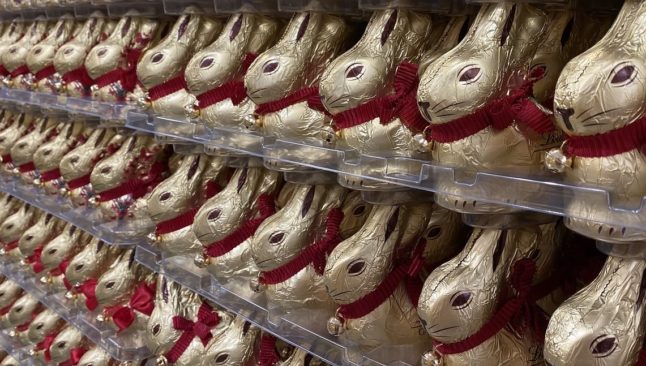Heddi Nieuwsma is an American living in French-speaking Switzerland since 2012 who now writes about Swiss food on her blog Cuisine Helvetica.
The mother of two made the move to Neuchâtel after her American husband was offered a job in the western canton, leaving a government position in Boston.
But adapting to Swiss life wasn't so easy at first – especially to the culinary traditions.
“When we first arrived in Switzerland, my youngest son had several dietary restrictions because of test results indicating multiple food allergies,” she told The Local. “Even with these restrictions, I wanted to make sure all of us could still enjoy Swiss food, so I figured out how to make things, like zopf or rösti, without ingredients like milk, butter or eggs.”
One thing that surprised her the most was how much the Swiss love bread.
“I arrived knowing about Switzerland’s chocolate and cheese, of course, but I was not aware of its love for bread. There are over 200 regional varieties, including a few dozen cantonal breads,” the food blogger said.
So what does Nieuwsma recommend for Easter? A Gâteau de Pâques, or Easter cake. Follow the recipe below:
Tools:
Tart pan, 24 cm (9 to 10 inches) diameter
Ingredients:
500 ml milk
60 grams sugar
1 teaspoon vanilla paste or vanilla extract
zest of 1 lemon
120 grams rice (e.g., Camolino rice or risotto)
30 grams butter, melted
2 eggs, separated
about 320 grams prepared pâte brisée (i.e., shortcrust pastry or pie crust)
100 grams apricot jam
powdered sugar for dusting
Instructions:
1. Stir together the milk, sugar and vanilla paste in a saucepan. Bring to a boil, and then add the lemon zest. Stir in the rice. Simmer for about 25 to 30 minutes until the rice becomes tender. Set aside to cool.
2. Place a piece of parchment paper in a tart pan, and then lay in the prepared pâte brisée. Trim the sides, if necessary. Prick the bottom with a fork in several places. Spread the apricot jam evenly on the prepared crust.
3. Melt the butter, and stir it into the cooled rice mixture. Separately, beat together the two egg yolks, and then stir them in as well, until combined.
4. Separately, beat together the two egg whites with an electric mixture until they form stiff peaks (it can be done by hand, but it takes more time and energy). Gently fold them into the rice mixture. Take the rice mixture and spread it evenly over the apricot jam in the prepared crust.
5. Bake the tart for about 40 to 45 minutes at 180C/350F until it has set (it doesn’t wobble when you take it out) and it’s lightly browned.
6. Once the tart has cooled, sprinkle with some powdered sugar (Please note: I made a quick bunny stencil with a sheet of paper. I held it down against the cake with some dried beans and sprinkled the sugar over it to make a pattern on the cake).
For more Swiss snacks and culinary info, check out Heddi Nieuwsma's blog, Cuisine Helvetica.



 Please whitelist us to continue reading.
Please whitelist us to continue reading.
Member comments